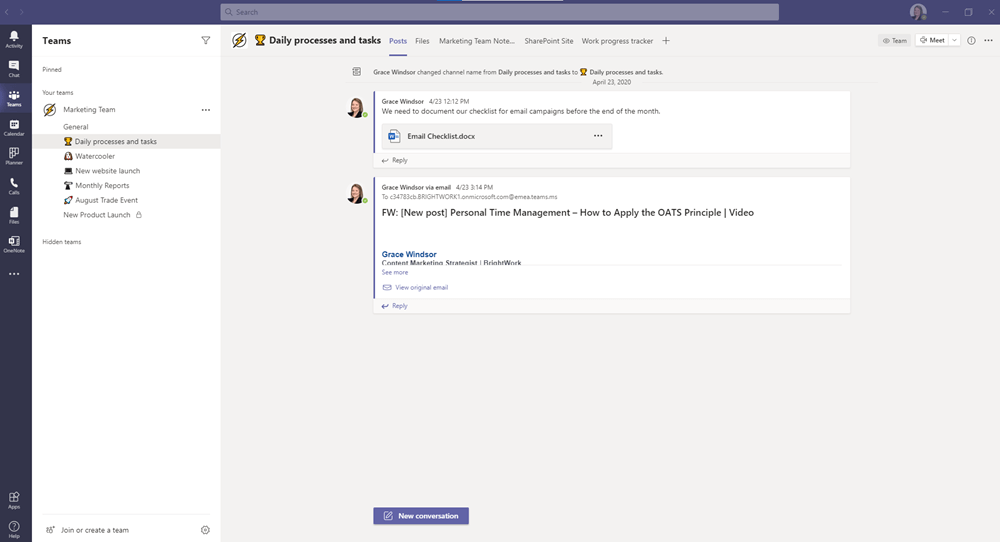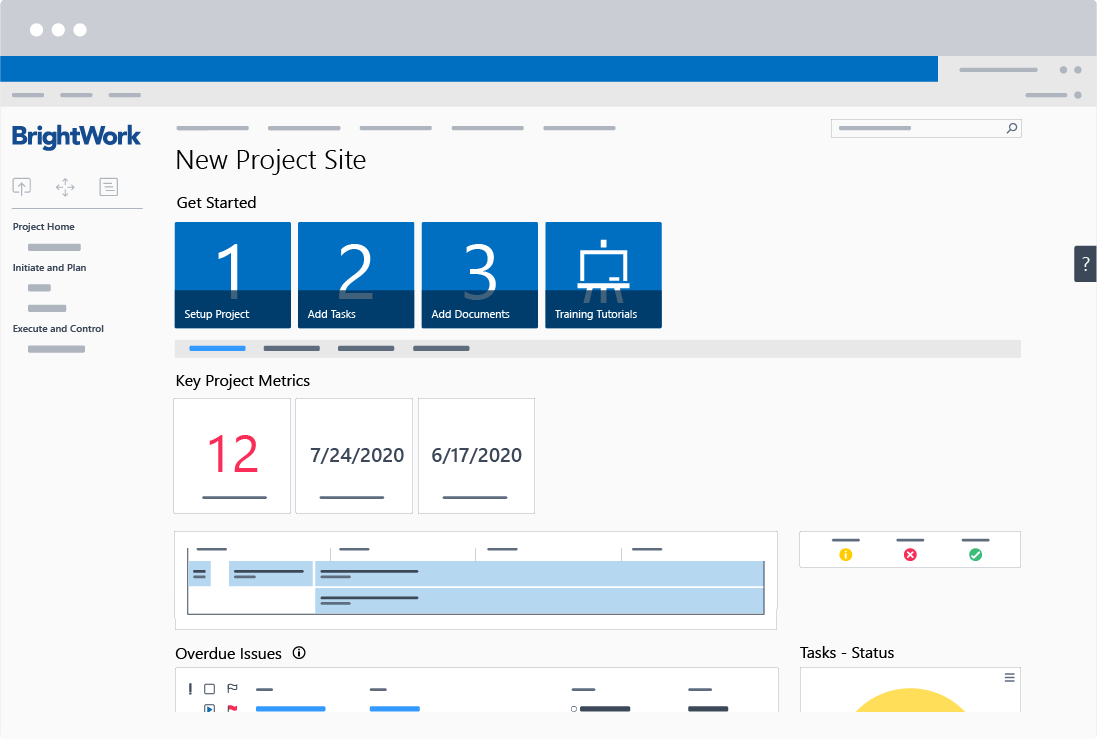Remote working was something that we all had to adapt to very quickly in 2020. While not a new concept, the widespread and rapid shift, sometimes across entire organizations, was certainly a shock for project managers.
Learn how BrightWork shifted to Remote Working and what we learned along the way!
Here at BrightWork, we moved our entire company offsite and into remote working with less than a week’s notice. We needed quick adjustments to our ways of working, and over time, we adapted as a team.
However, onboarding new team members who have never spent time in your office and have no relationships with staff is an entirely new challenge. We’ve put together a non-exhaustive list of six key areas that will ensure successful remote onboarding for your organization.
6 Tips for Onboarding
Warm Welcome
One of the biggest hurdles you’ll need to overcome is ensuring new team members feel welcomed and appreciated as early as possible.
Onboarding begins well in advance of Day 1 and you should be looking to excite new hires about joining. Sending a welcome pack to their home with need to know background info, a welcome letter, and some branded treats is a nice way to start.
If possible, set up their email account with a pre-populated calendar the day before so that no time is wasted on Day 1. With these items out of the way, Day 1 can focus on meeting the new team and a virtual tour of their online tools and portals.
Setup hardware and software
Your new hire may not have all the workspace equipment they need and this can lead to delays. Fine-tuning the workspace reduces frustration for you and your new hires.
A basic workspace usually requires:
- Laptop
- Monitor
- Headset
- Office supplies
- Desks
- Chair
If your organization provides equipment, ensure that all inventory and shipping checks are well-documented and completed in advance of Day 1.
Software setup and support might also be required. If possible, arrange a meeting with technical support with a checklist agenda to provide logins and software demonstrations.
Your IT support team is often the first point of contact for new hires with your organization. It might be necessary to provide a cheat sheet of answers for frequently asked questions (outside of IT) that may arise.
Building a rapport for early troubleshooting often mitigates larger problems later on.
Outline Short Term Goals
Orientation is crucial to getting new team members up to speed. This process can either be overwhelming or not challenging enough for your new hires. Either way, it’s important that team members feel like they are progressing.
If possible, you should provide your new hires with a 30-6-90 day plan.
Outlining a checklist with tasks for the first 30 days is a great way to clarify what is expected in the short term. These overall goals can be broken down into incremental tasks for your new team member to work through.
Checklists can be managed on a variety of platforms including Microsoft Teams and SharePoint. Here’s a useful article – with a template – on how to manage tasks on SharePoint.
When devising an initial 30-day plan, keep the word ‘incremental’ in mind. Overloading a new hire can lead to cognitive burnout so make sure to include some downtime to let learnings sink in.
It’s also important to consider how orientation tasks are delivered to ensure variety and direct action. Instead of dumping piles of reading material on new hires, use videos, quizzes, workshops, training, and trial tasks. It might also be a good idea to set up meetings (with agendas) with wider teams, as reaching out individually might be intimidating.
Onboard in groups
Joining a new team can be very intimidating. The immediate knowledge gap until you get up to speed can be a confidence blow and often a deterrent for new hires to progress through orientation.
Sharing the remote onboarding experience with other new hires can lighten the burden of being thrown in the deep end. Collaboration can also build stronger bonds and a sense of community between future colleagues.
Onboarding in cohorts can also minimize the workload and effort in training new staff. New hires can look to each other for support and problem solve before coming to busy, established team members.
If it’s not possible to hire in groups, that sense of support could be replicated by setting up new hires with a buddy outside of their line manager to bounce initial questions off.
Establish a Communication Culture
At this stage, your team is probably clear on what tools they use to communicate. If not, and your team is using a range of tools, now is a good time to centralize communication.
At BrightWork, we found that Microsoft Teams is a powerful platform for project management communication with features like real-time chat, video meetings, and document management.
Encourage all team members to turn on their camera during meetings and allow time for the watercooler chat that is lost from the office environment.

BrightWork Marketing allows 15 minutes every morning to catch up and start the day with their colleagues. Other teams might have regular social calls for games and activities.
Remember, instant chat is great for collaborative working but should not be relied on for building team rapport.
In the early stages of onboarding, there is no such thing as over-communicating. New hires should also have multiple contact touchpoints over the first week or so.
Look for Feedback
There is no right answer to onboarding and your process needs to be constantly adjusted and optimized.
Hard stats like staff retention and team productivity can help you measure onboarding success. You could also look for feedback from your new hires after they have completed orientation to see where you can improve.
Single project management tool
Having a centralized location to track and manage all project work has never been more important. Remote working falls apart if there is no standard approach to managing projects, with too much time wasted chasing people for updates and documents.
By leveraging SharePoint’s out-of-the-box task management features, BrightWork provides best-practice templates that make it easy for remote workers to find, do, and update their work.
This ensures teams and executives have visibility into project work, providing clarity on their role in achieving project goals.
The BrightWork Free Template is a great way to get ‘at-a-glance’ visibility to keep your team and stakeholders informed and engaged with accurate data.
Download and install the template, and deploy a pre-planned project site in less than five minutes!

